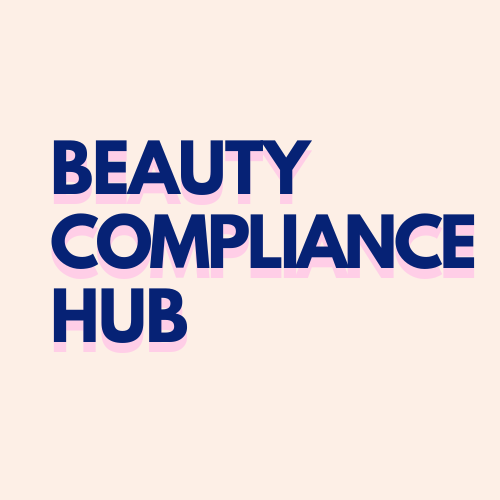💥 5 Mistakes Emerging Beauty Brands Make During Launch (and How to Avoid Them Like a Pro)
Launching your beauty brand is exciting — but it’s also easy to get swept up in the rush, the trends, and the comparison trap.
You’ve got the vision. The brand name. Maybe even the mood board and packaging idea. But before you press “launch,” here’s something you need to know: even the best-looking brands can flop without the right foundation.
Here are 5 critical mistakes new beauty brands make when launching and the smarter ways to avoid them.
🚩 1. Rushing Product Development for the Sake of Speed
The pressure to “launch fast” can kill long-term brand success.
You’ve seen other brands pop up overnight, right? The truth is many of them disappear just as fast. Why? Because rushing formulation and skipping proper testing leads to:
Unstable formulas
Texture separation
Irritation claims from customers
Costly recalls or reformulations
🔍 Example: A new brand launched a glycolic acid toner using a trendy, minimal formula. Within weeks, customers complained about burning and skin reactions they hadn’t done sufficient stability testing or checked the pH safety level for sensitive skin.
✅ The fix: Work with a reputable formulator. Conduct proper stability, compatibility, and preservative efficacy testing. Build timelines that prioritise performance, not just aesthetics.
📉 2. Following Trends, Not Customer Demand
Not every trend is meant for your brand or your customer.
Yes, the internet might be obsessed with slugging and glass skin. But if your customer is asking for eczema-friendly moisturisers or fragrance-free formulas, that viral dewy serum might flop in your world.
🔍 Example: A brand launched a “skin icing tool” after it trended online. Their core audience? Women over 40 dealing with hormonal skin. The product didn’t align with their needs, and sales fell flat.
✅ The fix: Do the groundwork. Do online social polls and surveys. Research your target demographic’s top pain points. Let data guide your development, not TikTok alone.
💸 3. Launching Too Many Products at Once
More SKUs ≠ more success.
Emerging brands often feel the need to launch a “full line”. Cleanser, toner, serum, cream, eye cream, lip balm, etc. Not only is this expensive, it makes marketing harder, inventory riskier, and quality control tougher.
🔍 Example: Rhode Beauty launched with just 3 SKUs — a lip treatment, a barrier cream, and a glazing fluid. That tight, purposeful curation allowed the brand to build massive buzz, simplify marketing, and refine their hero products before expanding.
✅ The fix: Start small, stay strategic. Focus on 1–3 SKUs that clearly solve problems and represent your brand values. Let each product have its moment to shine.
⚖️ 4. Overlooking Regulations and Compliance
A beautiful label won’t save you from non-compliance.
Many founders don't realise that cosmetic claims, ingredients, and even fonts and languages on packaging are regulated — and differ wildly by region (EU vs. GCC vs. US vs. Asia). Mistakes here can block your product from entering retailers, or worse, get it pulled post-launch.
🔍 Example: A brand launched in the UK using the claim “heals eczema” on their balm which flagged as a medicinal claim, not allowed under cosmetic law. They had to redo packaging, relabel everything, and pause their launch.
✅ The fix: Work with regulatory consultants who understand INCI naming, claim substantiation, safety assessments (CPSRs), and global market requirements. Your creativity needs a compliance backbone.
😔 5. Comparing Yourself to Trendy or Legacy Brands
Comparison kills momentum.
It’s easy to look at Rare Beauty, Fenty Skin, or Summer Fridays and think, “I’ll never be that big.” But here’s the truth: those brands have million-dollar marketing budgets, celebrity faces, and teams of 50+. You’re just starting and your small start is still powerful.
🔍 Example: A solo founder compared their slow organic growth to the rapid rise of a celeb-led brand. It led them to overinvest in influencer PR too early, draining resources and under-delivering ROI.
✅ The fix: Stay in your lane. Focus on your own version of success, 100 loyal customers who repurchase are more valuable than 10K who never buy. Be proud of your pace!
✨ BONUS TIP: Ignoring What Happens After the Launch
The launch is only Day 1. What’s your retention strategy? Who’s answering emails when customers ask about ingredients or allergens? How will you collect and use feedback?
✅ Create systems for:
Customer service & education
Reorder campaigns & feedback loops
Product reviews & UGC
Batch tracking & reformulation plans
Final Thoughts:
Launching a beauty brand is a bold move and it should be done with clarity, strategy, and confidence, not comparison or panic. Mistakes are part of the journey, but some are avoidable with the right guidance.
🚀 Ready to Launch the Smart Way?
We help emerging beauty founders develop compliant, high-performance formulations and create strategic roadmaps from idea to shelf without the overwhelm. Get in touch for a 1:1 strategy call. Your dream formula deserves a smart start!







